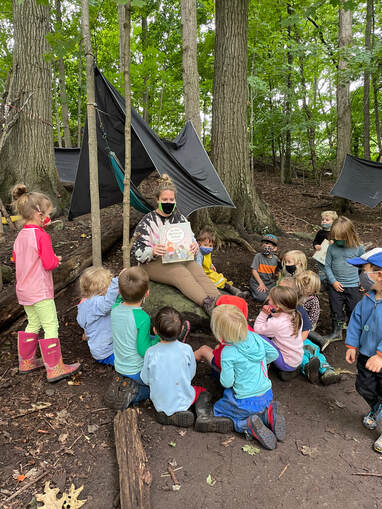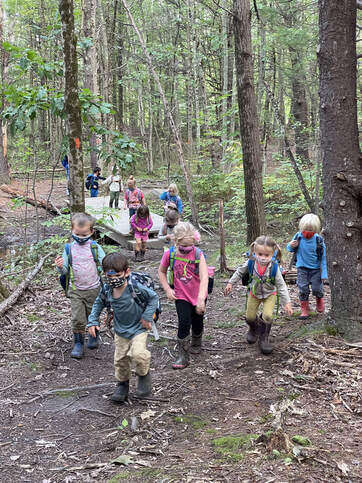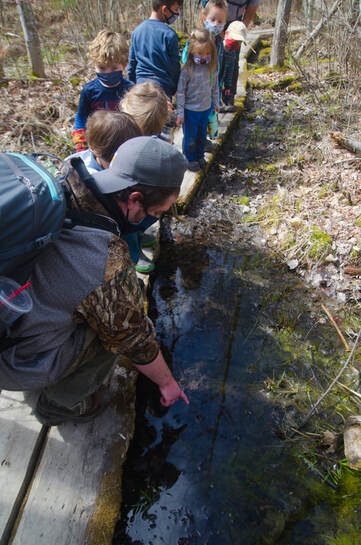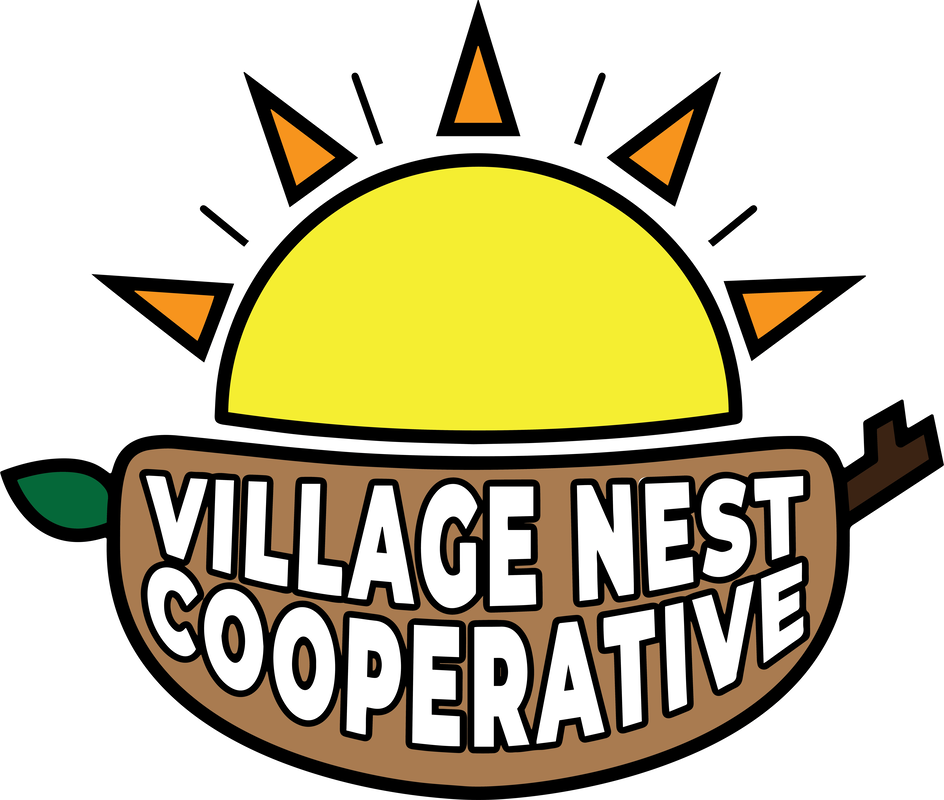|
1/3/2022 0 Comments What is Forest School??? Introduction Many people wonder what defines a “forest school” and how outdoor schooling differs from indoor schooling. We at the Village Nest Cooperative offer part and full-time preschool for ages 2.5-5 years old and a Microschool program for Kindergarten through Second grade. How does the Village Nest define forest schooling? Why do we choose to use the forest for education? How do we utilize the forest to aid our curriculum? What are the benefits of forest schooling? How do we cultivate young naturalists? We’re dropping some big knowledge for you here in our first Blog post!  Where did Forest schools originate? The first forest school was created by Ella Flatau in Denmark in the early 1950s. Soon after forest schools started popping up all over Sweden and Germany. Wakelin McNeel and H.L. Russell introduced the first American Forest school concept in 1927 in Laona, Wisconsin, inspired by an outdoor tree-planting project Russell observed in Australia. Today there are an estimated 240 nature-based preschools in the United States. Nature-based education can be found around the world and can take many other forms, such as summer camps, scouting, Outward Bound programs, wilderness therapy. and under the broad term of "outdoor experiential education". There are many overlaps with the modern concepts of slow parenting.  What Makes a Forest School Different? Here at the Village Nest Cooperative, we define our forest school by spending the majority of our time outside (typically 6-8 hours a day) in our outdoor classroom in Eliot, ME or 22 acres of preserved wildlife where we use nature as our primary place of play. We also emphasize play with objects found in nature rather than commercial toys. We even nap outside in Wise Owl hammocks wrapped with Nemo Equipment sleeping bags in the winter. We believe that outdoor schooling provides dynamic and varied learning conditions to challenge and empower students to discover in deeper and more holistic views than a traditional classroom environment. We see this evidence every day with how resilient and confident our students become throughout their time with us. What is the biggest difference? There are no walls in our outdoor classroom. Erin Kenney (Founder of Cedar Song Nature School in Washington State) used to say, “Children cannot bounce off the walls if we remove the walls!” The freedom that forest school gives children speaks for itself.  Why We Educate Outside There are so many reasons why we chose the outdoors as our classroom. We allow children to climb trees and big rocks, walk on slippery logs, snowshoe in the winter, thereby using nature as a tool to develop their life skills, mobility and muscle memory and balance. We’ve found that nature allows for more big noisy moments or quiet listening to our surroundings like birds and wind. Children are allowed to explore more freely and learn boundaries while in the outdoor environment. They take risks which leads to greater independence and self-sufficiency. Overall, we find that children educated in nature are healthier and more independent. Their ability and encouragement to try new things inspires confidence and resiliency.  How We Utilize the Forest to Aid or Curriculum At the Village Nest we believe that anything taught inside can be done outside with a little creativity. At the preschool level we use sticks to draw letters, natural found objects to teach counting, and let children lead play to enhance play-based learning. We practice play-based emergent curriculum where teachers watch and listen to what children are interested in then shape their future lessons around those curiosities. Our Microschool teachers follow the Oak Meadow Curriculum and Maine Learning Standards, and both programs can be tweaked to fit easily into an outdoor model. Four Benefits of Outdoor Schooling We believe that forest schools are suitable and adaptable for ALL learners and when done well can have tremendous benefits. For now, we will highlight four main benefits described so eloquently by the Forest School Foundation:
 How We Aim to Cultivate Young Naturalists Part of our bigger picture of educating children outside is for them to develop a relationship with nature. We teach our students about preserving nature, admiring plants, caring for animals and how mother nature holds such power. Our wish is to create students who feel comfortable in the woods, taking risks, and understanding the importance our forest play in the grand scheme of their lives. While we hope preschool age learner's will benefit from creative, sensory, spatial, and motor development; older children of primary school age will strengthen foundation’s for continued personal, social, and educational development we also aim to leave them with a desire to preserve our forest lands. Keep Kids Outside!
In closing we hope this gave you a better idea of why at the Village Nest Cooperative we have chosen a forest school model. We think the risks of being in nature are outweighed by the benefits indubitably. Mother nature provides endless opportunities for our children to use trees, rocks, and land as playscape. As we know PLAY IS A CHILD’S LEARNING! Our students benefit physically, socially, emotionally, and mentally in the outdoor setting. The outside provides for ALL types of learners and learning styles with a backdrop that leads to developing nature lovers who will preserve this land for years to come.
0 Comments
Leave a Reply. |
AuthorJessica Labbe, BS in Early Childhood Education ArchivesCategories |
|
About
Philosophy Programs FAQs Contact Us Parent Login School Calendar |
Site powered by Savvy Software
 RSS Feed
RSS Feed
